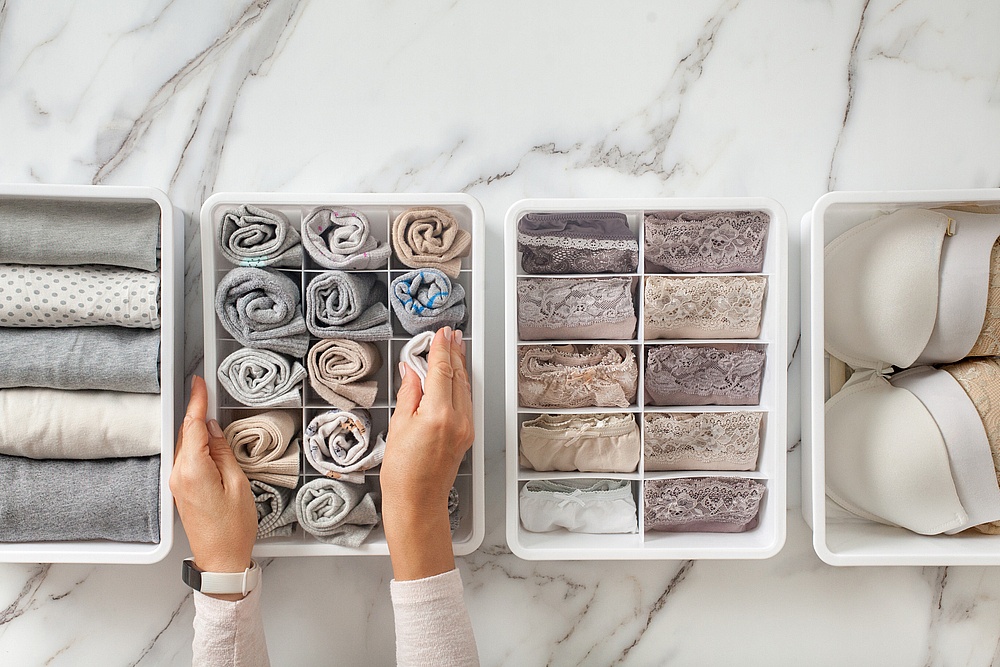 Admit it or not, there are nations in the globe where individuals can choose to dress in the same clothing all year. It can be more difficult to maintain a wardrobe here, where we can experience all four seasons in a single day, and we may find ourselves seriously short of household storage space.
Admit it or not, there are nations in the globe where individuals can choose to dress in the same clothing all year. It can be more difficult to maintain a wardrobe here, where we can experience all four seasons in a single day, and we may find ourselves seriously short of household storage space.Most of us might put our clothes into two categories: summer and winter. Even if the clothes we wear in the spring and summer are sometimes too hopeful, we continue to wear shorts, skirts, and t-shirts regardless of the weather. When buried beneath garments we would ordinarily wear in the generally colder months, such items might wrinkle with annoying ease and go misplaced and forgotten about. Conversely, suppose we continue to wear lighter clothing suited for the more temperate months. In that case, our autumn/winter items may get damaged, deformed, and even moldy if left to fester in the back of our wardrobes.
The solution to an overstuffed and underutilized closet is, of course, to separate our spring/summer and autumn/winter clothing. It takes some planning to store clothing properly, but having a closet or chest of drawers that is not about to explode is well worth the effort. Here are some recommendations on how I keep things that I will not wear for at least a season:
I Thoroughly Wash And Dry Them
I clean my garments well before putting them in storage. Based on the type of clothes to be stored, this might involve just running it through the washing machine or a trip to the dry cleaners. I do not iron my clothing because I know I will have to iron them again once I get them out of storage, and who has time for that? Remember that deodorant and perfume may stain over time, and creepy crawlies enjoy dust and filth if I need convincing that anything needs cleaning before I store it.I Get Rid Of Clothes I Am Not Going To Wear Again
If I have not worn something in a year, I am unlikely to do so again. I may have to accept that I will not be able to lose three dress sizes by this time next year. When it comes to storing clothes, I become merciless and organize my belongings into three piles: keep (storage), give to charity (or friends), and rubbish..jpg)
Vac storage bags are a fantastic idea that has helped me save a lot of room. It is also incredibly pleasant to watch a large bag full of all of my thick winter sweaters shrink gradually until it is almost magically tiny. Keeping products made of natural fibers like wool and silk in a plastic bag, on the other hand, can harm them and cause them to lose form over time. Vacuum bags may be fine for a few weeks, but if I store my belongings for a few months, I will use plastic storage boxes instead. I select boxes with an airtight top to ensure that my clothing stays dry and free of mold and mildew.
I Do Not Iron Beforehand And Pack Everything Neatly
.jpg)
Even though I do not have to iron my clothing, I still pack them carefully. I put the heavier goods at the bottom of the bag or box and the smaller, more fragile objects on top. I roll my clothing rather than folding them if I discover that I can fit more garments into the same area — this is an unusual quirk of physics, but it appears to be true. I do not overfill my container since my goods would lose their form and be difficult to iron once I get them back. I contemplate investing in a storage box with a hanging rail if I have stuff that should be hung rather than rolled/folded.


.jpg)




Comments (0)
Leave a comment